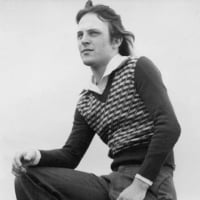Sexuality, diversity and disability: LGBTQ+ Lives
Dr Kirsty Liddiard is a disabled feminist and public sociologist researching disability, sexuality, gender, embodiment and childhood. You can find her on her website or on twitter. Today she is talking to us about the barriers to LGBTQ+ disabled people in our society.
Despite it being 2018, the words ‘sex’ and ‘disability’ can still cause controversy. Many disabled people (still) experience multiple barriers to sex, love and relationships. From denying our rightful access to sexual support, information and education, to the marked barriers within sexual and reproductive healthcare and the general shaming of our sexual bodies, desires, and pleasures, disabled people’s sexual selves are seldom acknowledged.
Where our desires are recognised, they are often assumed only to be within the realms of heterosexuality. Other people’s narrow attitudes towards disability on top of misinformed notions of what constitutes sex and pleasure, can mean that disabled people who identify as lesbian, gay, bisexual, trans, or queer (LGBTQ+), or who have gender identities that are non-binary or non-conforming, face particular forms of exclusion.

It’s important I state here that I’m writing as a cisgender disabled woman living in a heterosexual partnership. The most powerful sexual stories - as my recently published book, which explores the relationships between disability, sex, intimacy, and love suggests - come from disabled people speaking from their own lived experiences. Thus, in this short post, I speak as a disabled researcher and ally to LGBTQ+ people, not as someone with lived experience.
LGBTQ+ disabled people face considerable exclusion and objectification, as disablism, homophobia and transphobia come together to shape experiences of marginalisation. For example, adults with the label of learning disability are seldom ever assumed to be, at best, anything other than cisgender and heterosexual, and are rarely supported to explore their sexuality, particularly if they find home in residential or supported living spaces. At the same time, many LGBTQ+ disabled people experience discrimination in LGBTQ+ spaces: from inaccessible gay clubs and queer-friendly spaces to exclusionary LGBTQ+ sexual health services. Flipping this round for a moment, at the same time, many disability services and organisations seldom attend to the needs of LGBTQ+ people, causing a feeling of not being welcomed in and across these communities.

In addition, while government policy changes to Sex and Relationship Education (SRE) in schools that come into effect in September 2019 are said to be more embracing of sexual diversity and LGBTQ+ identities, there remains little focus on how these intersect with disability. Thus, formal sex education will still offer young disabled people who identify as LGBTQ+ little access to relevant information that keeps them safe and enables the development of a positive sexual self. And let’s remember this remains in a context where it is still not uncommon for disabled people, particularly those in special education, to receive any sex education at all.
To change this, we need to listen the experiences of LGBTQ+ disabled people, making space to hear about isolation, discrimination, and rejection, in order to bring about change. Sexual stories can – if voiced and heard – be productive, useful, and valuable. Stories can define a place and people. They offer a sense of collective experience – a means to claim space, foster positive identities and experiences, and demand social and sexual justice. Collectively telling and sharing our stories is how we can build diverse sexual cultures and communities, as we want them; ones that fit all of our bodies, pleasures and desires; ones that empower rather than oppress. So, what’s your sexual story?
Comments
-
1
-
IN Northern Ireland people are so backwards due to the church all brands peddling lies about LGBT people and feeding off vulnerable groups that it is a total disaster if people realise u are LGBT and they look at you with even more horror if they realise you are disabled too especially in rural areas it can only get worse the current environment as we head towards the unknown of brexit and even more control being handed to religious people due to the vacuum of government the only thing I can say to LGBT is don't come to NI and if stuck here make every effort to try to leave for other places that are less dark0
-
I think that, in general, healthy people look at the disabled and think that the disability would be passed on so therefore should not reproduce or even think of doing so. They are then surprised that disabled are normal in their attitudes to sex and reproduction. In some cases I assume that the surprise is stronger and those people actively discourage disabled people by either blocking access or simply not educating the disabled. I sometimes wonder whether this type of thinking can be changed but those that feel such distaste are unlikely to change. The really shameful point is that most disabilities are not passed on to children (physical ones anyway) and so their thinking is flawed from the outset.
TK0 -
Thanks Sam!Sam_Scope said:0 -
Agreed
0
Categories
- All Categories
- 15.7K Start here and say hello!
- 7.4K Coffee lounge
- 103 Games den
- 1.7K People power
- 149 Announcements and information
- 24.8K Talk about life
- 6K Everyday life
- 478 Current affairs
- 2.5K Families and carers
- 889 Education and skills
- 1.9K Work
- 560 Money and bills
- 3.7K Housing and independent living
- 1.1K Transport and travel
- 632 Relationships
- 1.5K Mental health and wellbeing
- 2.5K Talk about your impairment
- 873 Rare, invisible, and undiagnosed conditions
- 936 Neurological impairments and pain
- 2.2K Cerebral Palsy Network
- 1.2K Autism and neurodiversity
- 40.9K Talk about your benefits
- 6.1K Employment and Support Allowance (ESA)
- 20K PIP, DLA, ADP and AA
- 8.9K Universal Credit (UC)
- 5.9K Benefits and income
